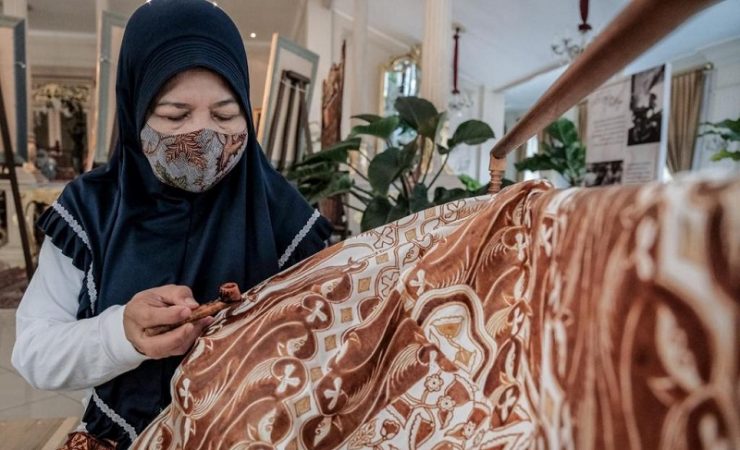THE INDONESIAN Ministry of Tourism and Creative Economy stated that batik as an intangible cultural heritage has been recognized by UNESCO since 2009 and has an important role as a tool of cultural diplomacy.
According to the Deputy Minister of Tourism and Creative Economy, Angela Tanoesoedibjo at the opening of the webinar from the Indonesian Women Entrepreneurs Association (IWAPI), with the theme The Role of Women Exploration in Spatial Planning and a Piece of Batik which took place online, on Friday (5/26), 2023 said that batik itself has a series of deep meanings for the life of the Indonesian people. Batik has become everyday clothing from going to the office, to school, to official events.
“Besides that, batik patterns contain meaning and in it also record the history of Indonesia. Batik has various cultural influences from Arabic calligraphy to European flowers to Chinese phoenixes in its patterns. Through batik, more than 3 thousand MSMEs depend on their livelihoods. This is proof that batik actually supports economic development,” he said.
Angela explained, and most importantly, batik is the identity of the Indonesian nation. So that batik is a very, very powerful tool of cultural diplomacy.
On various occasions, Indonesian President Joko Widodo introduced Indonesian batik to world leaders. Such as at the international G20 2022 event and the 2023 ASEAN Summit. World leaders also wore batik which in the end became a promotion and hot news in various international media.
“The potential for developing the batik business is still wide open. Moreover, the consumption of local products and brands has increased since the government program National Movement of Proudly Made in Indonesia (Gernas BBI) which continues to be implemented every year to on-board MSMEs to go digital and also encourage people’s love for Indonesian products,” said Angela.
The development of a batik business is not only in terms of selling the batik cloth, but can be created into various types of products. Starting from clothes, jackets, bags, to household accessories such as pillows, blankets, tablecloths, and so on. This is certainly an added value for the batik industry.
Not only that, the activity of batik itself is also an attraction and tourist activity that can bring in tourists. Take for example the Giriloyo Batik Tourism Village in Bantul, Yogyakarta, which has succeeded in bringing in nearly 4 thousand international and domestic tourists every month.
“In the future, of course, we hope that these very creative IWAPI women can participate in developing Indonesian batik, so that it will be more relevant for the younger generation and for consumption by the world community. Because we realize that there are economic benefits here, from the development of the batik business. There are efforts to preserve Indonesian culture. But most importantly there is alignment with women. Because the majority of batik craftsmen are women,” Angela concluded. [traveltext.id]
















